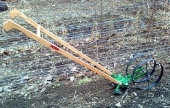
 1
1













 1
1












 1
1




Steve Farmer wrote:UK 256 people / square km
USA 35 people / square km
Russia 8.4 people / square km
I think this has a lot to do with the ease of finding a "private garden".
duane hennon wrote:somewhat permie-esque , no?
Dale Hodgins wrote:The huge collective farms of the Stalin Era, failed to produce enough. There was famine. Ukraine suffered more than most other areas. A combination of factors were involved.
duane hennon wrote:(where's the flag emoticom?)
 I found one for you:
I found one for you:

...take from me the spirit of sloth, despair, lust of power, and idle talk
 1
1









Steve Farmer wrote:UK 256 people / square km
USA 35 people / square km
Russia 8.4 people / square km
I think this has a lot to do with the ease of finding a "private garden".
Owner, Etta Place Cider




Dale Hodgins wrote:Considering the distances involved and modes of transportation, it seems that many of these gardens are dependent on petroleum, even when all work is done by hand.
...take from me the spirit of sloth, despair, lust of power, and idle talk
 1
1




Ann Torrence wrote:
I wonder what the people/arable square km is in each country. US has plenty of desert, Russia has a lot of extreme northern land.
...take from me the spirit of sloth, despair, lust of power, and idle talk

|
It is an experimental device that will make my mind that most powerful force on earth! More powerful than this tiny ad!
The new gardening playing cards kickstarter is now live!
https://www.kickstarter.com/projects/paulwheaton/garden-cards
|





